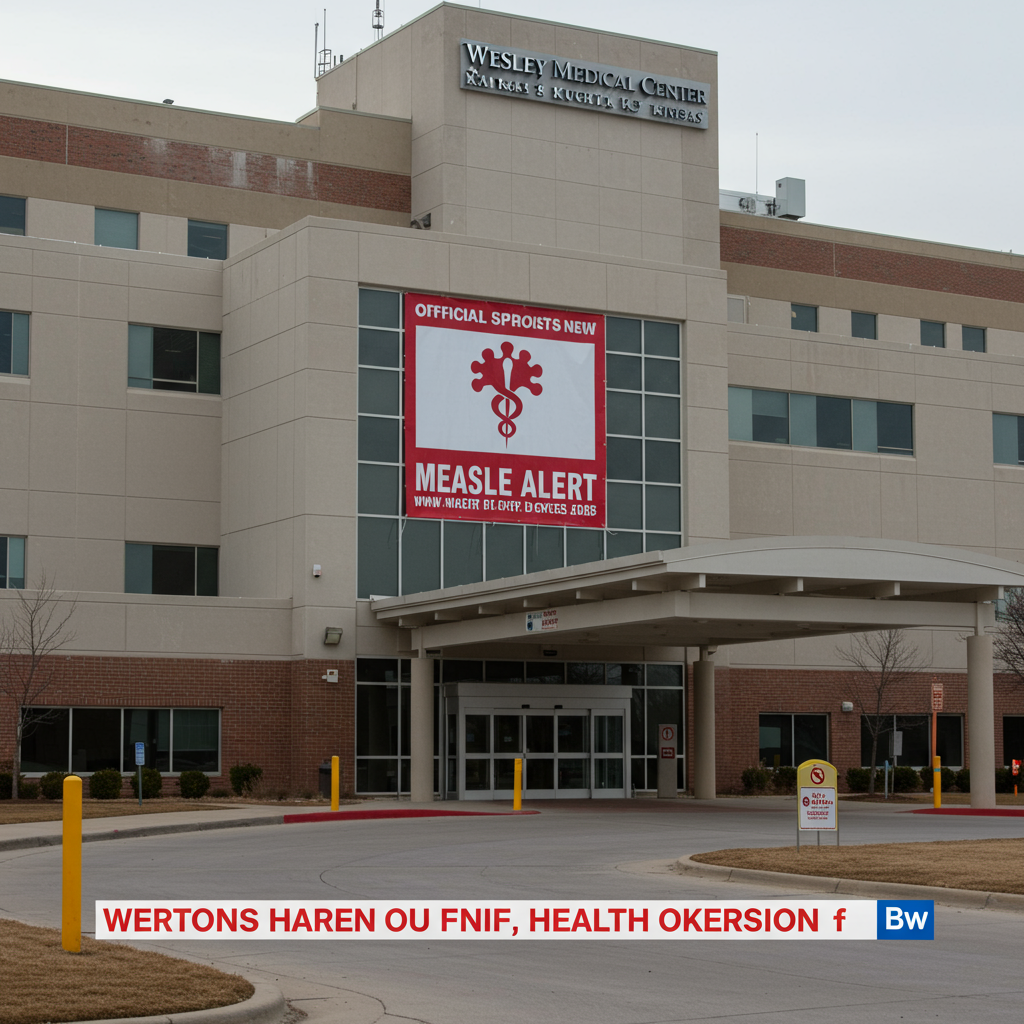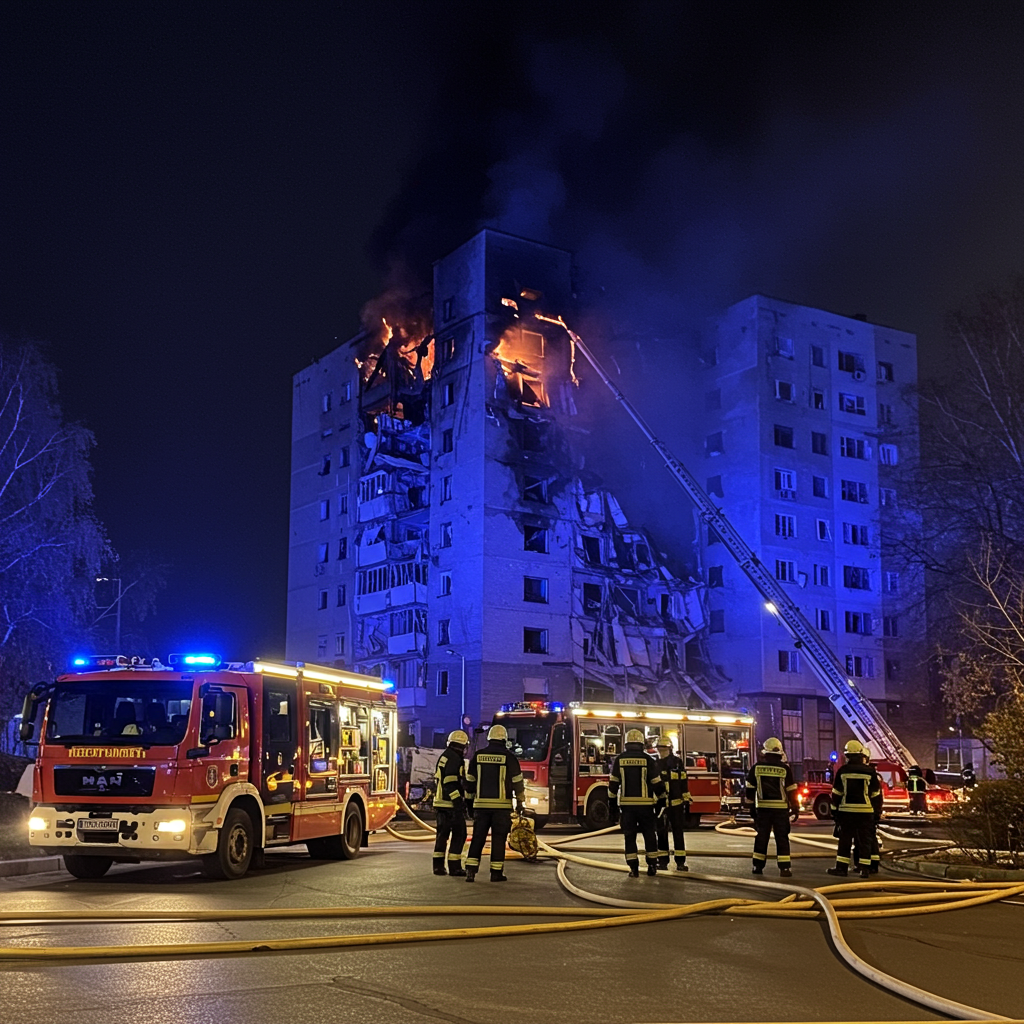Kansas health officials have issued a critical public health alert concerning a recent measles exposure in Wichita. The Kansas Department of Health and Environment (KDHE) confirmed the potential exposure event. This alert is specifically tied to Wesley Medical Center, a prominent hospital in the area. Authorities are urging individuals who were in a particular location at the facility during a defined timeframe to take immediate precautions and monitor their health closely.
Urgent Public Health Alert Issued
The Kansas Department of Health and Environment (KDHE), in coordination with local health departments, has announced a significant measles exposure risk. This specific incident occurred at Wesley Medical Center in Wichita, Kansas. The alert comes amidst a period of rising measles cases across the state, heightening the need for public vigilance. Measles is a highly contagious respiratory virus. It spreads easily and can cause serious illness. The KDHE’s swift action aims to contain any potential further spread from this event.
The exposure event is linked to a single, confirmed positive case of measles. Health authorities have pinpointed the exact location and time period of concern. Their guidance focuses only on those potentially affected within these strict parameters. This targeted approach helps inform those most at risk without causing unnecessary alarm for the general public.
Who is At Risk? Specific Exposure Details
The potential measles exposure at Wesley Medical Center is strictly limited to a specific area. Individuals are considered potentially exposed only if they were present on the Fifth-Floor Pediatric Unit located in Building 4 of the medical center.
Furthermore, the risk applies only to those present during a narrow window of time. The potential exposure period began at 10 p.m. on Tuesday, July 1, 2025, and concluded at 4:45 p.m. on Thursday, July 3, 2025.
KDHE officials emphasize that if you were in any other part of Wesley Medical Center, or in the pediatric unit outside of these exact dates and times, you are not considered exposed to this specific case. The measles virus is extremely contagious. It can linger in the air and on surfaces for up to two hours after an infected person has left an area. This makes pinpointing exact exposure locations and times crucial for public health response. People who are not immune to measles are particularly vulnerable upon exposure.
Recognizing Measles Symptoms: What to Watch For
Measles symptoms typically appear within 7 to 14 days after contact with the virus. However, they can sometimes take up to 21 days to develop. It’s vital for anyone potentially exposed to monitor for symptoms throughout this entire period.
Key signs and symptoms of measles include:
High fever: Temperatures can often reach over 104°F.
Cough: A persistent, sometimes severe, cough.
Runny nose: Similar to a common cold.
Red, watery eyes: Also known as conjunctivitis.
Koplik spots: Tiny white spots with bluish-white centers that appear inside the mouth. These often show up one to two days before the rash.
Skin rash: A characteristic blotchy rash typically starts on the face and hairline. It then spreads downward over the body, reaching the trunk, arms, and legs. The rash usually appears three to five days after the initial symptoms.
If you were in the affected area during the specified time and develop any of these symptoms, especially fever and a new rash, take immediate action.
Recommended Actions After Potential Exposure
If you were present on the 5th Floor Pediatric Unit, Building 4 at Wesley Medical Center between July 1 (10 p.m.) and July 3 (4:45 p.m.), public health officials recommend several steps.
First, assess your immunity status. Check your vaccination records for the Measles, Mumps, and Rubella (MMR) vaccine. Documentation of a past measles infection or laboratory evidence of immunity also counts. Most people born before 1957 or those who have received two doses of the MMR vaccine are considered immune.
Second, monitor for symptoms for 21 days following your last potential exposure date. This monitoring period is critical. Based on the date of exposure, here are the monitoring end dates:
Exposed on July 1, 2025: Monitor until the end of Tuesday, July 22, 2025.
Exposed on July 2, 2025: Monitor until the end of Wednesday, July 23, 2025.
Exposed on July 3, 2025: Monitor until the end of Thursday, July 24, 2025.
Third, if you develop symptoms suggestive of measles, call a healthcare provider before visiting their office, a clinic, or a hospital. Inform them of your potential measles exposure. This allows the facility to take precautions to prevent exposing other patients and staff. You can also contact the Sedgwick County Health Department directly at 316-660-7300 for guidance.
Fourth, if you are not immune, consider self-isolating to prevent potential transmission. If isolation is not possible, avoid large gatherings. Limit close contact with individuals susceptible to severe illness from measles. This includes unvaccinated people, pregnant women, infants, and those who are immunocompromised.
Finally, consult a healthcare provider or the local health department. Discuss your exposure and immunity status. They can assess your risk and determine if post-exposure preventive treatment, like an MMR vaccine or immunoglobulin, is necessary. This can potentially prevent or reduce the severity of infection.
Protecting Yourself and Others: Vaccination Guidance
Vaccination remains the single most effective way to prevent measles. The Measles, Mumps, and Rubella (MMR) vaccine provides strong protection. Two doses of the MMR vaccine are typically recommended for long-lasting immunity.
Most adults who received two doses as children or who were born before 1957 are considered protected. If you are unsure of your vaccination status or immunity, contact your healthcare provider. They can help you determine if you need vaccination or a blood test to check for immunity.
In response to this exposure, KDHE has authorized early vaccination for infants aged 6 to 11 months in Sedgwick County. Typically, the first dose of MMR is given at 12-15 months. This earlier dose provides some protection. These infants should still receive the standard two-dose series later according to the recommended schedule. Parents of infants in this age group who were in the exposure location should contact their pediatrician or the health department about early vaccination options.
While highly effective, it’s important to note that a small percentage of individuals (about 3%) may still contract measles even after receiving two MMR doses if they have close contact with an infected person. However, vaccination significantly reduces the risk and severity of the disease.
Broader Context: Rising Measles Cases in Kansas
This specific exposure alert at Wesley Medical Center occurs during a period of increased measles activity in Kansas. In the week leading up to this announcement, KDHE reported three new measles cases statewide. This brought the state’s total to 83 cases spread across 11 different counties. The rising number of cases underscores the importance of high vaccination rates to protect communities, especially vulnerable populations who cannot be vaccinated, like very young infants or immunocompromised individuals. The contagiousness of the virus means even a few cases can pose a significant risk in areas with lower vaccination coverage.
Frequently Asked Questions
What specific symptoms should I watch for after this potential measles exposure?
If you were at Wesley Medical Center during the identified exposure time, you should watch for measles symptoms for 21 days. Look for a high fever (over 104°F), cough, runny nose, and red, watery eyes. You might also see tiny white spots inside the mouth (Koplik spots) before a blotchy rash appears. The rash usually starts on the face and spreads down the body. Developing any of these symptoms after the exposure means you should contact a healthcare provider immediately by phone.
Who should I contact if I think I was exposed or develop symptoms after visiting Wesley Medical Center?
If you were in the specific exposure location (5th Floor Pediatric Unit, Building 4) during the specified time (July 1, 10 p.m. to July 3, 4:45 p.m.) and are concerned or develop symptoms, contact healthcare professionals. Call your primary healthcare provider first and inform them of the potential measles exposure before* visiting in person. You can also contact the Sedgwick County Health Department directly at 316-660-7300 for guidance on monitoring and next steps. Do not visit a clinic or hospital without calling ahead.
What preventative steps should I take if I was in the affected area but am not sure about my immunity to measles?
If you were potentially exposed and are uncertain about your immunity (you haven’t had two MMR shots, haven’t had measles, or aren’t sure of your status), several steps are advised. First, try to find your vaccination records. If records aren’t available, contact your doctor or the Sedgwick County Health Department to discuss options like getting the MMR vaccine or a blood test to check for immunity. Regardless of status, monitor yourself for symptoms for 21 days. If you lack immunity, consider limiting contact with others, especially vulnerable individuals, and avoid large gatherings to prevent potential spread. Always call ahead if you need medical care.
Stay Informed and Vigilant
The measles exposure alert at Wesley Medical Center serves as an important reminder about the highly contagious nature of this preventable disease. By understanding the risks, knowing the symptoms, and following the guidance from KDHE and the Sedgwick County Health Department, individuals can protect themselves and their communities. Check your vaccination status, monitor for symptoms if potentially exposed, and seek expert medical advice by phone if concerns arise. Public health relies on informed and proactive citizens.
Word Count Check: 1032




